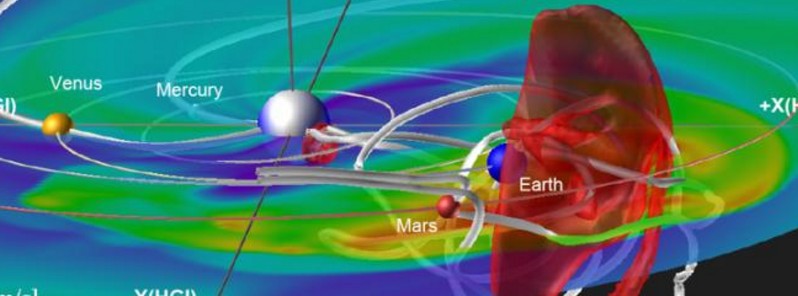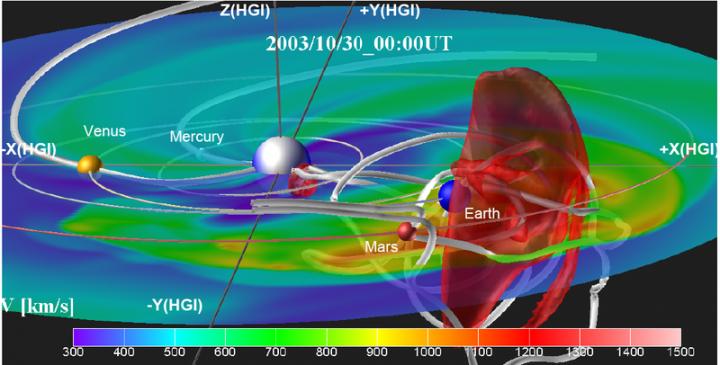Robust CME simulation model developed for future of space weather forecasting

Japanese scientists have developed a new and robust simulation code for Coronal Mass Ejection (CME) events based on the realistic description of the mechanisms behind their generation and propagation through space. The method has been successfully validated using observational data from a series of CME events reaching Earth in late 2003. The new model represents a significant step towards enhanced operational space weather forecasting.
"Our model is able to simulate complex 'flux ropes', taking into account the mechanisms behind CME generation derived from real-time solar observations. With this model, we can simulate multiple CMEs propagating through space. A part of the magnetic flux of the original flux rope inside the CME directed southward was found to reach the Earth, and that can cause a magnetic storm," explains lead author Daikou Shiota of the Nagoya University Institute of Space and Earth Environmental Research.
"The inclusion of the flux rope mechanism helps us predict the amplitude of the magnetic field within a CME that reaches the Earth's position, and accurately predicts its arrival time," Shiota says.

A coronal mass ejection event showing a representation of the flux rope anchored at the sun and the propagation of the magnetic flux rope through space toward Earth. The white shaded lines indicate the magnetic field lines. Red shade indicates high-speed stream in the front of the CME. Credit: Nagoya University
A series of CMEs occurring in late-October 2003 released large flares of magnetic energy that reached the Earth several days later, causing radio blackouts and satellite communications failures. Data from these events were used to validate the approach taken in the new model.
"In our validation, we were able to predict the arrival of a huge magnetic flux capable of causing one of the largest magnetic storms in the last two decades," says coauthor Ryuho Kataoka of the National Institute of Polar Research and the Department of Polar Science, SOKENDAI (Graduate University for Advanced Studies).
"Because our model does not simulate the solar coronal region, its computational speed is fast enough to operate under real-time forecasting conditions. This has various applications in ensemble space weather forecasting, radiation belt forecasting, and for further study of the effects of CME-generated solar winds on the larger magnetic structure of our solar system." Shiota says.
This is a new generation of a well-developed complex flux rope within a CME model. The findings will significantly contribute to accurately predicting magnetic fields in space and enhancing our understanding of the mechanisms behind CME events.
Reference:
- "Magnetohydrodynamic simulation of interplanetary propagation of multiple coronal mass ejections with internal magnetic flux rope (SUSANOO-CME)" – D. Shiota, R. Kataoka – February 5, 2016 – DOI: 10.1002/2015SW001308
Featured image credit: Nagoya University

Commenting rules and guidelines
We value the thoughts and opinions of our readers and welcome healthy discussions on our website. In order to maintain a respectful and positive community, we ask that all commenters follow these rules.